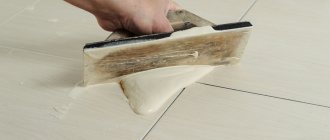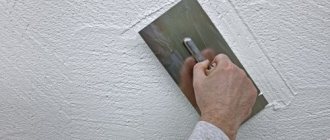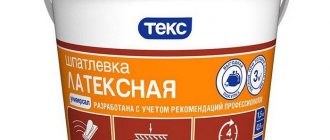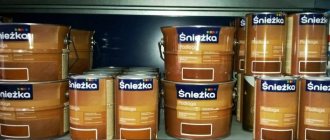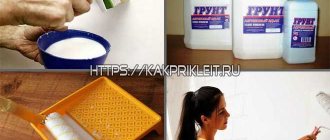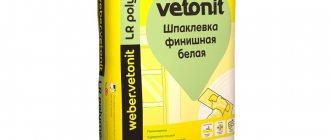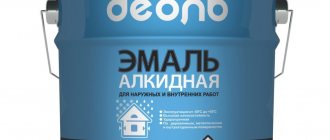About the composition of the material
Polyurethane foam is sometimes confused with sealant, although these are different products with different purposes. The sealant is used when it is necessary to seal thin (up to 3 cm wide) seams. If you are going to seal larger parts, you will need spray foam.
Polyurethane foam is a composition based on polyurethane foam (gas-filled plastic). The main component is supplemented with auxiliary substances: catalysts, foaming agents, stabilizers. Changing the proportions of the components allows you to obtain a product with different degrees of foaming, hardening times, density and rigidity of the structure.
The components are placed in an aerosol can along with a mixture of gases. The gases are partially dissolved in the polymer mixture, partially liquefied or in the gas phase. It is the gases that are responsible for the formation of foam: they perform “displacement” work and saturate the mixture with bubbles.
The gas mixture helps push out the foam Source legkovmeste.ru
After leaving the can, the foam reacts with water, which is in the air in the form of water vapor, and begins to harden. The process is called polymerization, and the reaction rate and drying time of the polyurethane foam are largely influenced by humidity. When the mass finally hardens, polyurethane foam is formed - a lightweight, porous, elastic, white or yellowish material.
How to choose polyurethane foam?
It is impossible to determine which polyurethane foam is best for doors, windows or other purposes. The following points are taken into account:
- The size of the space to be filled . It is better to foam narrow cracks with an assembly sealant with a low expansion coefficient. To fill a large space, a significant increase in volume plus increased strength is important.
- Best before date. Typically, the manufacturer limits the use of polyurethane foam to 18 months. However, with increasing storage, even if the expiration date has not yet expired, the liquid composition acquires viscosity inside the container. The result will be much less than the declared volume, but after hardening the polyurethane will be denser with small pores. Due to long-term storage, the composition inside the cylinder tends to diverge. Before use, shake it well for about 30 seconds to mix all the ingredients.
- Household or professional. One-time foaming is easier and cheaper to carry out using a household cylinder with a straw. If there is a lot of work to be done, it is better to buy a pistol. The additional costs will be justified by the savings in installation material, which will be approximately doubled. Professional sealant is used by window and door installers.
- Cylinder weight. When purchasing, an ordinary person thinks that the heavier the container, the more polyurethane foam will come out. This is wrong. As the liquid composition increases, the amount of injected gas decreases. The sealant just won't come out all the way from the container. The light weight of the container means more gas, but the amount of foam may not be enough to foam. Conscientious manufacturers maintain an optimal balance. A cylinder with 750 ml of liquid composition is pumped with 250 ml of gas.
When choosing a sealant, be sure to take into account at what air temperature it will be used.
It is impossible to make polyurethane foam at home, although this question worries all enthusiasts. The technical process is very complex and dangerous. An alternative can be liquid foam, but its manufacture requires the purchase of special equipment. It’s easier to buy a ready-made container of foam.
Classification and properties
The commercially available compositions can be grouped according to different properties:
- By time of use. There are summer, winter and all-season mixtures.
- In terms of composition, there are one- and two-component systems.
- According to application, there are household (in cylinders with an adapter tube) and professional (pistol) compositions.
- By flammability class. There are mixtures of all types: fire-resistant (B1), self-extinguishing (B2), flammable (B3).
Foam has become widespread due to the following parameters:
- Seal. Ability to seal seams, fill holes and cavities in a wide variety of building materials.
A simple way to obtain airtight seams Source wolfgroupweb.com
- Thermal insulation. Polyurethane foam is known for its low thermal conductivity. Calculations show that a layer of polyurethane foam insulation is equivalent in its ability to retain heat to brick laying 0.5 m thick or a wooden beam 19 cm thick.
- Absorption of sound and vibration. After hardening, the material retains its porous structure, with the pores filled with air. Numerous air capsules successfully dampen sound and vibration waves, which has a positive effect on comfort in the home.
- Installation properties. Foam reliably connects structural parts made from any building materials.
Practical characteristics also influence popularity:
- Simple and convenient application.
- Long service life with preservation of properties regardless of external factors, ranging from moisture to fungus.
- Versatility. There are sealants on the construction market with a wide range of prices and performance characteristics.
Processing a seam from a household spray can Source msd.com.ua
See also: Catalog of companies that specialize in finishing materials and related work
Applications and varieties
Polyurethane foam is a one-component polyurethane sealant and has a high polymerization rate. Reliably fills gaps and voids during the installation of doors, windows, cracks in brickwork, walls, roofing, and promotes sound insulation.
There are several types of products depending on the application:
- By purpose - household and professional. Professional sealant is applied only with a construction gun, and polyurethane foam for simple household work is equipped with a plastic tube for easy use.
- According to temperature characteristics - winter and all-season. Unlike universal sealants, frost-resistant products retain their properties at temperatures from -50°C to +60°C and are ideal for outdoor work.
- Fire-fighting agents - used to seal joints of surfaces exposed to heat. Indispensable in rooms with a high degree of fire hazard - baths, kitchens, living rooms equipped with fireplaces - and are divided into fire resistance classes.
The material is packaged in cylinders that are under pressure. When sprayed, the liquid sealant from the tube, under the action of the displacing gas, expands, increases in volume and thereby fills the voids. High-quality manufacturers fill a 300 ml cylinder, which contains 30 liters of sealant and this amount is enough to fill a 5 cm wide gap around the entire perimeter of a door or window opening.
RECOMMENDATION! In order not to purchase a special gun for the cylinder, for one-time installation use you can buy a cylinder, which includes a plastic tube. But if it is necessary to work with a considerable number of dimensional voids, then it is recommended to use a professional sealant with a construction gun. This will save you time and money.
Where and how to use it
The properties of the sealant open up wide possibilities for its use. Professional mixtures have the following features:
- They are used in large-scale works, so they are equipped with a reusable gun (it can be distinguished by a long tube). The tube allows you to economically and accurately apply foam, especially where access is limited.
- Cylinders for professional use have a thread (the gun is removable). The supply of foam is regulated more accurately (when compared with household spray cans) thanks to the valve; therefore, the mixture is used sparingly.
- A feature of using professional mixtures: the cylinder valve and the gun adapter are washed from foam with an acetone-based aerosol product. It eliminates the remains of fresh, uncured polyurethane foam.
In everyday life, polyurethane foam is used in the following cases:
- With its help, structures are fixed and compacted. Usually this is the installation of windows, doors, balcony blocks, filling voids near water pipes.
Filling a technical hole near a pipe Source soudal.com.sg
- Fill various voids, cracks and spaces between walls, frames, doors.
- Sealing masonry and roofing structures.
- Install stoves and fireplaces.
- Sound and heat insulating materials are fixed.
How to use the product?
Before using sealant, you need to correctly calculate its volume. If you need to foam the door with polyurethane foam, then the gaps between the frame and the wall 3–5 cm wide will be filled from a 300 ml cylinder. The output will be about 30 liters of expanded polyurethane. A 500 ml container will produce 35 to 40 liters of foam. This is enough for one and a half door frames. A 750 ml container is capable of dispensing from 45 to 50 liters of sealant. Enough foam to handle two doors.
Before foaming, the surface is cleaned of dust and grease and moistened generously with water. In winter, ice, snow, and frost are removed. To increase the foam yield, shake the container for 30 seconds and warm it to room temperature, but not over the fire.
To properly foam with polyurethane foam, the container is held upside down. In the reverse position, only gas will come out. When using a gun, the cylinder is screwed onto the seat. Extrusion occurs by pressing the trigger. If household foam is used, a plastic tube with handles for pressing is screwed onto the spout of the balloon.
The seams are foamed from bottom to top. They try to apply a uniform layer with a thickness of half the free space. Crevices with a depth of more than 5 cm are filled in twice, allowing time for the first layer to dry.
At the end of the work, the gun is washed with a special solvent. The cylinder is disposed of. After drying, the excess that appears is cut off with a knife.
Performance characteristics
Polyurethane foam can be described by the following parameters:
- Output volume (productivity). The volume is written on the cylinder and measured in liters, but this value is valid for ideal conditions. In practice, the amount of substance released depends on the temperature and humidity of the external environment, wind, and the temperature of the cylinder itself.
- Adhesion. The composition forms a strong bond with various building materials, but if you are not sure of the result, the surface can be pre-degreased. The adhesion will be poor with Teflon, silicone, polyethylene, as well as with any oily surfaces and ice.
Visual volume of the contents of the cylinder Source ice-people.ru
Scope of application
Listed below are some types of work where the use of polyurethane foam is necessary:
- filling voids and cracks in rooms where there is no heating, as well as on the roof;
- eliminating gaps between doors;
- fixation without fastening tools;
- attaching thermal insulation to walls;
- sound insulation;
- application in the field of renovation of premises;
- sealing holes on the surfaces of boats and rafts.
Polyurethane foam allows sealing seams and cracks up to 80 mm wide inclusive (larger cracks must first be filled with boards or bricks). In order for the sealant to last as long as possible, it must be used correctly.
Below are some tips for using and applying polyurethane foam:
- You should spray water on the surface for better adhesion (before and after application).
- It is necessary to shake the container before starting work, holding it with the bottom up.
- Any gap should not be filled completely (about half) - this will reduce the consumption of the composition.
- It is necessary to cut off excess foam after the polymerization process.
- It is preferable to use high-quality and proven products from well-known brands.
The main factor determining the drying rate
The easiest way to estimate how long polyurethane foam hardens is by knowing the composition of the sealant. There are two possible composition options.
One-component
The polymerization process begins the moment the composition leaves the container, when the sealant begins to extract moisture from the air. To speed up the process, experts advise strengthening contact: moisturizing work surfaces. The chemical reaction with air finally ends after a day, after which you can cut off the hardened polyurethane with a knife.
One-component formulations are designed for everyday use. When studying their parameters, it is useful to become familiar with the following quantities:
- Cure time until adhesion disappears. It fluctuates between 10-20 minutes.
Demonstration of the quality of polyurethane foam Source pinimg.com
- Secondary expansion. It should be minimal, a good indicator is less than 150%.
- Dimensional stability. +/-5%.
- Density. Approximately 25 (for household) 35 (for professional) kg/cubic meter.
Two-component
Professional consumables are offered in this form; In the cylinder, the components are stored separately, and begin to interact, mixing in the gun. Polymerization occurs due to the chemical reaction of two components without access to moisture. Since the foaming process does not require ambient air, the foam mass is formed much faster (compared to one-component mixtures).
The main advantage of two-component materials is accelerated polymerization. Protruding excess can be cut off after 15-20 minutes, and complete hardening occurs after 30 minutes. Some two-component systems require longer curing times, ranging from 40 to 80 minutes.
Working position of a cylinder with a two-component composition Source aviarydecor.com
Expansion coefficient
The main feature of polyurethane foam is its fast setting and hardening time. An increase in volume several tens of times contributes to the formation of a dense porous structure with impeccable strength characteristics. The expansion coefficient of the sealant is not the same for different compositions - it can be primary, secondary, two-fold, three-fold. What you need to know about the expansion coefficient of foam:
- High-quality products initially increase 60 times or more of volume. During secondary expansion, they shrink within 5% of the mass of the substance. The expansion time of polyurethane foam from primary to secondary is several hours.
- Inexpensive polyurethane foam can expand 30-50 times, but secondary expansion can reach 30% of the volume or show a high level of shrinkage - more than 5%. Large shrinkage leads to ruptures of the frozen mass.
- Information about the maximum yield of the substance is indicated by the manufacturer on the cylinder. This indicator is the expansion coefficient of the foam after the composition is released from the tube. The top layer dries in 20-30 minutes, complete hardening occurs within 24 hours - according to the instructions.
Sealant manufacturers calculate the expansion coefficient under optimal application conditions and temperature conditions. You cannot completely rely on the figure indicated on the packaging, since it is not always possible to strictly follow the manufacturer’s recommendations. The change in expansion coefficient is affected by low temperature, high humidity, and uneven surface.
Important: A 300 ml container of high-quality foam contains 30 liters of sealant. This amount of foam is enough to blow out a wide gap (up to 5 cm) around the perimeter of a door or window opening. From a tube with a volume of 500 ml you can get 40 liters of substance, 750 ml - 50 liters of mounting sealant.
Drying time when installing doors and windows
The answer to the question of how long it takes for polyurethane foam to dry when installing doors will also depend on temperature indicators. Manufacturers usually indicate two types of temperature:
- Application temperature. Range from +5 °C to +30 °C; for winter sealants the range starts from -10 °C (and sometimes -16 °C).
- Temperature of the cylinder. From +15 °C to +30 °C, including winter sealants. It follows that in winter, in the intervals between work, the cylinder must be kept warm.
If your working conditions fall within the range declared by the manufacturer, then the drying time will correspond to the norm. Increased humidity will help speed up the process. Approximately, foam from popular manufacturers with a layer of 5 cm will reach the required density in 2.5-3 hours. After this, you can cut off the excess and begin, for example, painting.
If work is carried out in winter (at sub-zero temperatures), polymerization may last for a day, although officially it does not exceed 12 hours.
Fixing the door frame Source odveryah.ru
Factors influencing how long it takes for foam to harden and dry
Understanding the process of action of polyurethane foam will allow you to judge the drying speed:
- after leaving the cylinder, the volume of the composition immediately increases, i.e. primary expansion occurs, which allows filling all the cracks and crevices in the structure being treated;
- exposure of foam to air ensures secondary expansion;
- the surface film is formed within a few minutes, depending on the composition, type and manufacturer, the average is 15-20 minutes;
- It is possible to cut off excess foam within four hours;
- the chemical process is completed within 24 hours, complete polymerization occurs on average after 24 hours.
Foam Soudal Construction and Repair 500 ml. Photo Petrovich
However, often these indicators can vary , and within significant limits. This is due to several factors:
1) Drying time is affected by the recommended application temperature . Each type of composition has its own indicators: minimum and maximum. Summer foams are used at positive temperatures, at least +5 degrees Celsius, up to +30-35. Winter ones can be successfully used at significant low temperatures, down to -28 degrees. All-season ones are suitable for use in both summer and winter. However, despite this information, there are optimal conditions under which it is possible to obtain the best result. After all , the higher the ambient temperature, the faster the foam dries . Therefore, it is recommended to apply foam when the thermometer readings are from +5 to +25 degrees. Some experts call the figure +10 degrees, and many manufacturers recommend carrying out work at a temperature of +23.
2) Ambient humidity. Polymerization occurs when exposed to moisture in the air. If it is dry and warm indoors or outdoors, then humidity is minimal. As a result, the foam will not expand to the maximum (indicated) volume. At normal air humidity, for example, Soudal considers 60% optimal, the formation of a surface film will take 20-30 minutes, curing - four hours, and complete polymerization - 12 hours. However, in most cases it takes 24 hours for final hardening.
Reference. The time of complete polymerization is the time during which all chemical reactions in the foam complete and it acquires its final structure.
3) Layer thickness. Ideal temperature and air humidity ensure drying of the 50 mm thick installation layer. within three hours. Complete polymerization will occur in at least 12 hours. It is recommended to treat thick seams after 24 hours.
Reference. The initial treatment time is the time after which the foam hardens enough to subject the seam to mechanical processing: trim off excess, prepare for painting or putty.
Numerous experiments demonstrate that moisture can penetrate into frozen foam to a depth of no more than 3 cm. Penetration of moisture to layers deeper than 3 cm is difficult. Therefore, the diameter of the seam applied in one pass should not exceed 6 cm. Otherwise, the middle of the seam may not fully polymerize and a void will form there, which deteriorates the properties and increases the risk of destruction. Therefore, filling deep seams must be done in layers. The second layer must be applied after a crust has formed on the first. The surface of the first layer must be moistened.
Household mounting foam Makroflex 500 ml. SHAKETEC. Photo by Maxidom
4) Type of cylinder. Polyurethane foam is sold in aerosol cans of various sizes. High quality containers are equipped with blocking valves that return to their original position when the foam supply stops. As a result, air does not pass into the cylinder, and carbon dioxide does not escape from the container.
5) Surface type. Certain surface features may affect the rate at which the composition hardens. Irregularities, defects, and differences in altitude do not allow obtaining a layer of uniform thickness. As a result, the time for 100% drying of the seam increases.
How to speed up drying, how to dry faster
To obtain high-quality results and reduce the time of complete polymerization, it is recommended to carry out work under optimal conditions . But this is very difficult to achieve. Therefore, there is one effective way . The polymerization process is affected by moisture. Liquid increases adhesion, so before carrying out work it is necessary to spray the surface on which the foam will be applied. In addition, periodic wetting of the joints with polyurethane foam is recommended.
How long does it take to harden, how long does it take for initial and complete drying?
The exact time of initial drying and complete polymerization , if not impossible, to determine and imagine Moreover, this statement applies to any types and variants of foams, regardless of purpose, composition, or manufacturer. Since the duration depends on the conditions of use . We indicated the approximate indicators earlier, but it is possible to present other approximate parameters:
Professional foam, placed in a gap 30 mm deep, hardens in about half an hour , and household foam takes about 60 minutes to harden. Complete drying takes about a day. In a humid and warm room, complete hardening can occur twice as fast, i.e. in 12 hours. In any case, it is recommended, if time permits, to increase the waiting period and not proceed with primary processing.
How long does it take for foam to dry when installing doors and more?
The previously presented foam drying indicators are relevant for various types of work. However, it is also possible to provide individual parameters for individual jobs in which polyurethane foam is used especially actively:
- After foaming the cracks of the door frame, it is not recommended to use (open and close) the doors for 3-4 hours . It takes at least 9 hours to completely harden
- When installing windows, the average drying time of the foam is approximately 3-5 hours , the appearance of a hard crust occurs after 20-30 minutes , and complete polymerization can last 24 hours.
Briefly about the main thing
Polyurethane foam can be used to solve a wide range of construction problems. There are dozens of sealants on the market, differing in composition, time of application and release form.
The main parameter that worries professional builders, plumbers and summer residents is the rate of polymerization (drying) of the composition. For some sealants, moisture contained in the air is involved in the process. Therefore, it can be accelerated if the surfaces are additionally moistened with water. Another factor on which the speed of the process depends is the operating temperature.
Ratings 0
How do negative temperatures affect concrete?
According to clause 5.3.15. SP 70.13330.2012 SNiP 3.03.01-87, laying concrete at subzero temperatures is possible only if special conditions are created that ensure the necessary properties of concrete.
Only under special conditions is it possible to pour concrete at subzero temperatures
Solution quality at different temperatures
Laying concrete at sub-zero temperatures leads to irreparable changes in the structure.
In this regard, you should remember the features of working in winter:
- a solution prepared in the summer heat has a higher durability and hardens faster than a mixture prepared in winter;
- When working in icy cold conditions, the quality of the solution drops sharply. This is evidenced by visible deformation of the product. Therefore, the concrete placement temperature must be above 0°C.
Physico-chemical processes
Hydration of concrete at subzero temperatures slows down, chemically unbound water turns into ice, increasing its volume by 9.7%. Because of this, stresses arise in the mixture, which destroy its structure. Frozen concrete gains high strength due to the adhesion of frozen water molecules, but this does not last long.
When the temperature of the outside world increases above 0 degrees, the water will begin to thaw, which will resume hydration. But changing the structure of concrete will not allow it to gain the required design strength. Research shows that the effect of low temperature does not change the physical and chemical characteristics of concrete if the mixture has gained 30-50% of its design strength before freezing.
It takes longer for concrete to mature at low temperatures
Setting and hardening of concrete at low temperatures by day
To find out the most appropriate time to start construction work, you should pay attention to the graph, which shows the hardening of concrete at low temperatures. Each manufacturer of building materials places a table with information about concrete hardening at low temperatures on the packaging
The best time is considered to be the moment when the concrete strength is at least 72%. To better understand how to calculate working time, you should study an example that describes the setting of concrete at low temperatures by day.
Consumption
Most often, a cylinder volume of 750 mm has an output of 50 liters of material. However, this does not at all indicate that it is enough to fill a 50 liter container. Typically, foam is unstable due to internal bubbles. Due to its own weight, the lower layers burst, and this, in turn, significantly reduces the volume. So 50 liters is a conventional figure. Using the material in the cold, you may encounter a clear decrease in volume. Therefore, the information indicated on the surface of the cylinder is true only when maintaining ideal conditions. The hardening time varies: the composition dries differently if it is used indoors and outdoors.
See below for the secrets of polyurethane foam.
Purpose of Macroflex foam
Polyurethane sealant, which can also be called polyurethane foam, is available in cylinders of various capacities. The components of the sealant are a prepolymer and a displacing gas (propellant). When the prepolymer leaves the container, it hardens as a result of interaction with air. The result of hardening is the formation of fairly rigid polyurethane foam, which penetrates into cracks, recesses, and holes. This explains the purpose of Macroflex foam:
- Sealing joints, cracks, holes.
- Filling voids in the material.
- Gluing together several materials.
- Thermal insulation and sound insulation of various surfaces and premises.
There are several types of Macroflex foam. Foam for household use has an attached plastic tube through which it exits the container. The professional version has a special outlet for attaching a mounting gun. In addition, professional foam has a higher yield of the finished composition, and it costs more.
Adhesion
An important characteristic of a sealant is adhesion, which refers to the ability of the composition to bond to a surface. For high-quality material, this unit of measurement should be high in relation to any building materials. Problems with the connection occur when you need to secure polyethylene or cellophane, or Teflon.
The quality of the connecting material depends on the packaging. Good containers have durable and reliable valves that prevent the atmosphere from entering the container and the excessive release of compressed gas from it. A good quality cylinder has more weight and, if you turn it over, you should feel how the contents move quietly and slowly in it.
